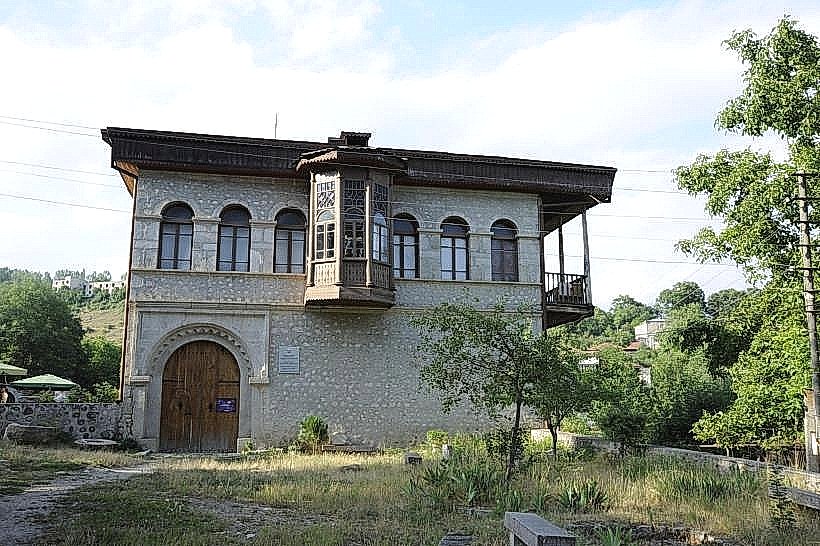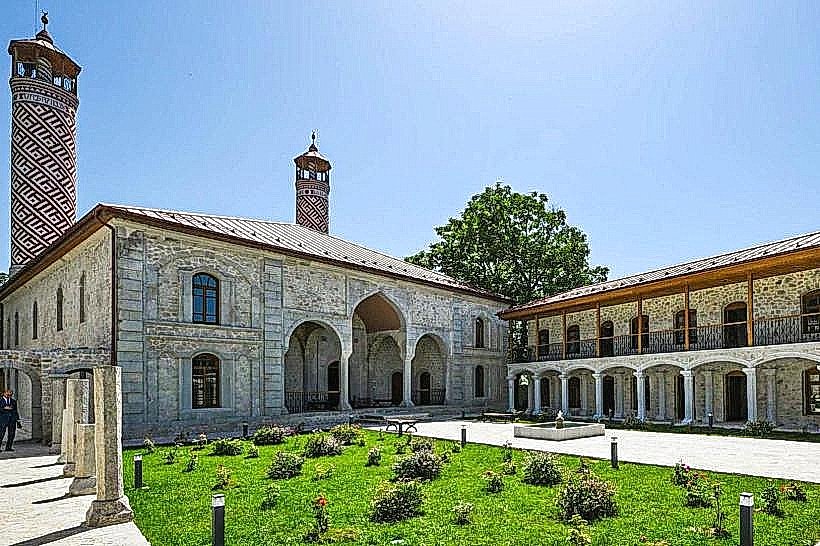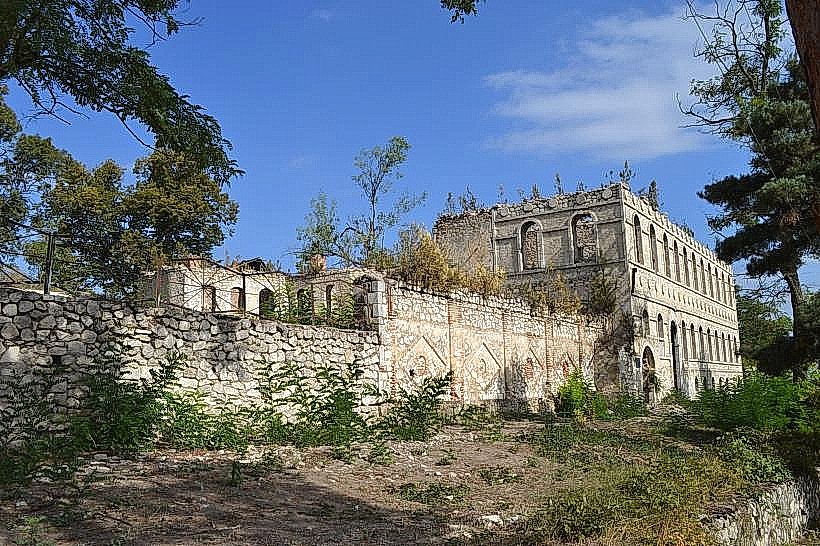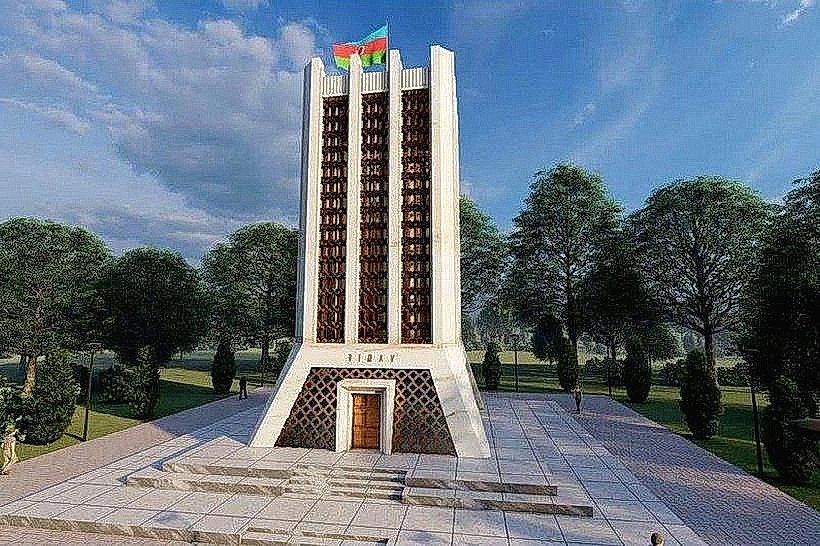Information
Landmark: Yukhari Govhar Agha MosqueCity: Shusha
Country: Azerbaijan
Continent: Asia
Yukhari Govhar Agha Mosque, Shusha, Azerbaijan, Asia
Overview
The Yukhari Govhar Agha Mosque-its name meaning “Upper Govhar Agha Mosque”-stands as one of Shusha’s most treasured landmarks, blending graceful arches with a deep sense of history, subsequently govhar Agha, daughter of Ibrahim Khalil Khan of Karabakh, commissioned the mosque in the 18th century to give the city’s Muslim community a single, central venue to gather and pray beneath its cool stone arches.Believe it or not, Set on a rise in Shusha, it forms a pair with the Ashaghi (Lower) Govhar Agha Mosque, echoing the city’s layout and the layered social life of that era, then architecture and Design The mosque stands as a striking example of Islamic architecture in the Caucasus, blending local stonework with graceful Persian arches and subtle Ottoman patterns.Built of pale limestone and brick, it has two slender minarets that rise from the main façade, framing the doorway like tall candles and drawing the eye upward, and a wide dome crowns the mosque’s main prayer hall, and sunlight slips across the interior’s geometric and floral designs that decorate each wall, the mihrab, and the carved minbar, in some ways As it happens, Arched windows and patterned brickwork line the façade, letting soft light spill into the prayer hall and fill it with a calm, golden glow, likewise inside, the dome glimmers with quiet patterns, and its shape carries the imam’s voice clearly across the hall-a design that shows deliberate, skillful planning.The mosque’s courtyard, once alive with study and conversation, still holds traces of carved stone and worn paths beneath the dust, as well as the Yukhari Govhar Agha Mosque stands at the heart of Shusha’s story, bound to its rise as the political and cultural center of the Karabakh Khanate, where stone walls once echoed with council debates and music.It served as both a spot of worship and a lively gathering spot, where people came for classes, conversations, and the warm scent of shared meals, what’s more though the mosque suffered neglect and shell damage during the region’s 20th‑century conflicts, it still stands firm, a quiet symbol of Shusha’s Islamic architectural heritage.Crews have worked to keep the building sound and save its ornate details, like the carved stone around the windows, at the same time as visitors draw near the mosque, their eyes catch the graceful balance of its minarets and the pale shimmer of its walls set against Shusha’s rough, stony hills.Stepping through the doorway, you find a broad, open room where clean lines meet touches of elegance-a soft gleam from brass fixtures catching the light, furthermore arched windows and a soaring dome fill the space with air and light, while carved patterns and faintly worn inscriptions lend it a quiet, intricate beauty.In the courtyard, you pause to take in the mosque’s long history while your eyes drift across the aged town’s crooked lanes and toward valleys fading in the haze, therefore the setting feels calm and thoughtful, especially in the hush of morning or the fading light of late afternoon, when sunlight glances off the rough stone and traces the slender lines of the minarets.Believe it or not, Local guides bring the city’s past to life with stories of Govhar Agha and the mosque’s area in its faith and daily bustle, making the visit feel richer and more vivid, and the Yukhari Govhar Agha Mosque isn’t just a venue of worship-it stands as Shusha’s proud emblem of culture and refined architecture, its pale stone glowing softly in the afternoon sun.Its design draws from Karabakh’s rich artistic traditions, keeping alive the memory of a once‑vibrant Muslim community-like the faint pattern of aged tilework still visible in the sunlight, after that tucked into one of Shusha’s ancient neighborhoods, the mosque weaves the city’s past into its present, its stone walls and arches holding both memory and modern life in a single rhythm.Stepping into the mosque opens a window onto Shusha’s spiritual, social, and artistic heartbeat, letting you feel the city’s enduring heritage in every carved doorway and quiet echo, subsequently stone catches the light and traces every carved curve, turning it into a landmark that grips both the eye and the heart at the center of Karabakh.
Author: Tourist Landmarks
Date: 2025-11-25










